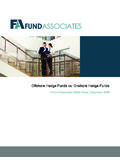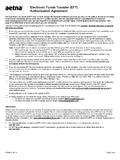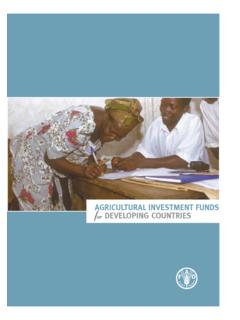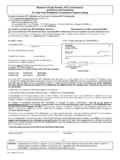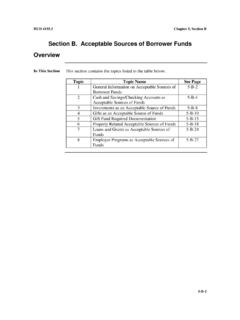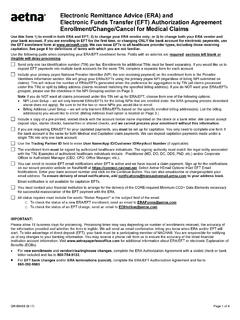Transcription of Can nonprofits have too much in Reserve Funds
1 Executive Service Corps Strengthening the nonprofit community can nonprofits have too much in Reserve Funds ? Michael Daily, Executive Director of the Executive Service Corps - Northern New England A Q & A in a recent nonprofit World came across my desk about the time we were asked by a client what the limit was on the size of Reserve Funds that they could reasonably have without losing their tax exempt status. In nonprofit World the writer, Peter Brinckerhoff, suggested developing a policy on building Reserve Funds but pointed out there was no limit on the size as evidenced by the Harvard University endowment (now $35 billion).
2 The only exception would be if more than 50% of the reserves came from Unrelated Business Income. While we agree with the writer, there is more to the issue than this. We are all in favor of increasing fund balances by building short term reserves and endowments. The web site , which is the nonprofit arm of the Better Business Bureau, suggests a limit on short term reserves. They suggest that unrestricted net assets be no more than 3 times the larger of last year s expenses, or this year s budget.
3 They suggest that Funds in excess of that should be spent on meeting your mission. They do not address restricted assets, so presumably excess Funds could be moved to a restricted endowment to increase long term sustainability. We are aware of three downside risks to building large reserves. The first is media risk . The most difficult media risk situation we are aware of is a Massachusetts nonprofit , Friends of the Public Garden. Friends of the Public Garden supplements what the City of Boston can provide to maintain and enhance the public spaces in downtown Boston.
4 The watchdog group, Charity Navigator analyzed the Friends 990 from 2004. They pointed out, as reported in an August 13, 2006 article in the Boston Globe, that Friends of the Public Garden had many years of operating expenses in the bank. According to the Executive Director of Charity Navigator They are raising more and more and spending less and less . While the Friends put up a spirited defense, it would have been more compelling if they had the time to develop their case more fully before being blindsided by the Boston Globe.
5 If your reserves begin to build beyond two years of operating expense, you need to have your story ready. You can raise Funds for any charitable purpose, including sustaining your mission in hard times, but you need to have a credible explanation available for donors and, if asked, by the press. The second is political risk . Returning to the Harvard example, political pressure on the large college and university endowments has set off a flurry of new student aid programs that replace student loans with grant to students from middle class backgrounds.
6 There 10 Emery Dr, Atkinson, NH 03811 (603) 362-9300 (207) 641-2300 Executive Service Corps Strengthening the nonprofit community is a move afoot in the Massachusetts legislature to tax endowment Funds above $1,000,000,000 at a 2 % rate. The third downside risk is less onerous. If the investment income from the reserves is more than 1/3 of the total support, then your nonprofit can be classified as a Private Foundation. While still tax exempt, you will be subject to an Excise Tax of 1% or 2% on your investment earnings.
7 The rules for classification are quite complex and beyond the scope of this article. As an example, in a recent year one of our clients, which is classified as a Private Operating Foundation, earned $170,000 on investments of $3,500,000. Their Excise Tax of 1% was $1,700. If you are among the fortunate few with that size of resources this is not a huge burden. The additional reporting and regulation as a Private Foundation may be more costly than the tax. For other articles including How much in Reserve Funds Should Your nonprofit have ?
8 Go to 10 Emery Dr, Atkinson, NH 03811 (603) 362-9300 (207) 641-2300

